Farm without farmers: a peek into unmanned farm in E China's Jiangsu province

Agency. The spring sowing season has arrived, but in the sprawling wheat fields in Lujia township, Kunshan, east China's Jiangsu province, there wasn't a farmer in sight across the vast expanse. What could be seen was only a drone hovering above the fields.
"This is an unmanned farm. It spans 3,840 mu (256 hectares) and primarily grows rice and wheat," said engineer Geng Bojian, who's engaged in the R&D and regular maintenance of the farm.
This intelligent farm, which features minimal management and unmanned operations, was established last year through the utilization of big data, artificial intelligence, self-organizing communication networks, and a suite of intelligent equipment such as multi-rotor drones, driverless tractors, unmanned harvesters, and smart irrigation gates, according to Geng, who's also a member of the Yangtze River Delta Academy of Smart Agriculture under the Chinese Academy of Agricultural Sciences (CAAS).
In recent years, Kunshan has been working to promote the digitalization of agriculture, focusing on smart agricultural machinery and intelligent farming, and striving to build relevant intelligent scenarios.
In 2021, Suzhou and the CAAS signed an agreement to jointly establish the East China Agri-Tech Center, and the unmanned farm was exactly one of the projects launched by the center.
In the unmanned farm, there is a white building - the intelligent command center, also known as the "smart brain" of the farm.
At the center, a young staff member was staring at a big screen displaying live video footage of the wheat fields, with relevant data constantly updating on either side.
The young staff member was performing routine field patrol with a drone.
This "smart brain" comprises modules for crop monitoring, agricultural machinery management, resource management, drone control, agricultural operations, intelligent irrigation, equipment alerts, and analysis and decision-making.
"In the past, a field patrol needed several people riding electric bikes to each plot, with each person inspecting hundreds of mu of land. It would take at least an hour and a half to complete the patrol," Geng said.
"Now, a drone can cover the entire area in half an hour while simultaneously collecting crop growth data," he added.
Geng said that in every plot there is a soil condition monitor, which is used to record soil temperature, moisture, and real-time water level.
"The unmanned farm employs an intelligent irrigation system. Once the monitors detect low soil moisture, the system will be activated," Geng told People's Daily.
Besides, a small weather monitoring station is set up in the fields, capable of real-time collection of meteorological data such as temperature, humidity, wind speed, and rainfall. In addition, there are also devices like insect monitoring traps and spore catchers.
Shen Junjie is an employee of Jiangsu Provincial Agricultural Reclamation and Development Corporation. He works with three colleagues to manage the agricultural operations of this unmanned farm. Their daily work involves collecting field data with monitoring devices and drones. Based on the data they collect, the intelligent command center would analyze crop growth and provide scientific guidance on farming practices
"Through a mobile app, we receive notifications from the command center and can remotely assign tasks to unmanned agricultural machines," Shen told People's Daily.
The unmanned agricultural machines Shen mentioned were parked in a storage facility, all large in size, including cultivators, transplanters, crop sprayers, and harvesters - each equipped with the BeiDou satellite navigation system. All the operators needed to do was to set the routes and tasks, and remotely start the machines.
"These machines weren't unmanned when they were manufactured. It was our technical team that modified them, and now each one possesses unique skills," Geng said.
Today, unmanned equipment are employed in the entire rice and wheat production cycle, including plowing, sowing, managing, and harvesting. The cultivators can complete fertilizing, tilling, and sowing operations all at once. The harvesters can monitor harvest quality in real time while reaping, and upload data to relevant platforms. They can even chop and spread the rice straw back into the field or pass it to a baler for organic processing. The harvested rice and wheat is transported by unmanned vehicles to the farm's drying center for automatic drying and storage.
"In another couple of months, it will be the time to harvest the winter wheat. All the agricultural machines will be in full swing, " Geng said.
- By Yin Xiaoyu, People's Daily





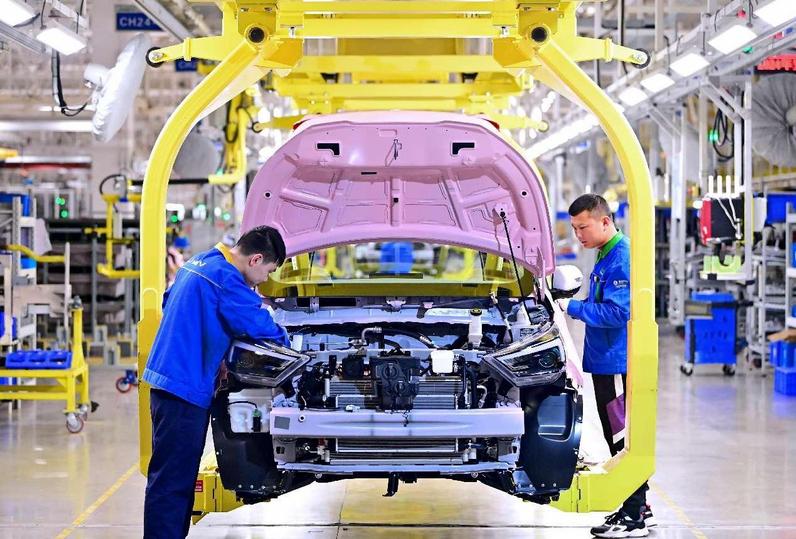
प्रतिकृया दिनुहोस